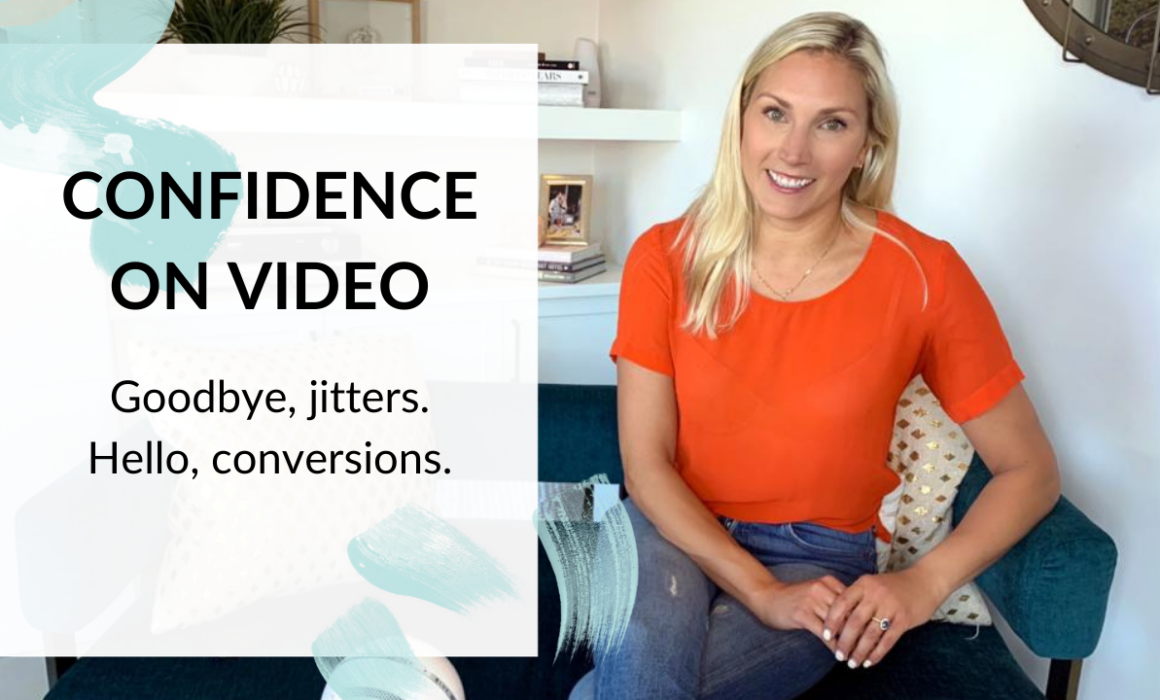How to feel confident on camera
Watching and hearing yourself on camera can be an awkward experience to say the least. The overanalyzing, picking at small details, cringing at the sound of your own voice… We totally get it. Speaking to a camera can be uncomfortable. But we also know audiences are looking to connect with brands that are real and human. Video is one of the best ways to break down that digital barrier, tell your story in your own words, and ultimately connect with your audience. But feeling confident on video takes practice.
Let’s talk about how to get out of that awkward headspace and step into your on-camera confidence.
1. Arrive prepared with a clear goal in mind
You’re making videos for a reason — so make sure the ‘why’ is clear to you and your audience. Before you hit record, have a clear understanding of the goal of your video. Is it to make an announcement? Communicate a new offer? Just check-in with your followers? It sounds basic, but a clear goal for every video will keep you on track.
2. Write an outline, not a script
While a script might seem like a good idea, it can often work against you. Scripts can feel robotic and shatter your confidence every time you miss a specific word. Save yourself the frustration!
Instead, write down your main ideas in point form. Once you’re in front of the camera, speak to each point, and move onto the next. You know your stuff, and this more natural way of speaking will ensure that’s clear to the audience.
3. Show up feeling put together and confident
What makes you feel your best? Steaming your button-up? Putting on lip gloss? Styling your hair? Whatever it is, do it! How you present while filming is completely in your control. Knowing you look and feel good will be one less thing to worry about when you hit the Record button.
4. Get your nervous energy out
Nervous energy is completely normal in front of the camera. It may sound silly, but you can physically shake those jitters out. Here’s our go-to: plant your feet hip-width apart and shake your whole body until you feel more settled. And don’t forget to breathe! There are a ton of different breathing techniques that instantly calm your body.
5. Physically ground yourself
Speaking of planting your feet, this is another way to ground your body during filming. Plant those feet with your weight equally distributed and sit in your full power. Not only will this avoid awkward shifting, but it’ll portray your confidence in a physical way that’s obvious on camera.
6. Keep eye contact
Think of the camera like a member of your audience. Look directly into the lens and make eye contact in the same way that you would in person. Because after all, there’s always a real person on the other end of the video.
7. Speak slowly, clearly, and with authority
We have a tendency to rush when we’re nervous, so speak slow and clear enough for the audio to pick up your words. This will avoid playing an unwanted game of Telephone with the audience.
8. Start talking with non-scripted dialogue
Another great way to get those jitters out! Speak straight to camera about something you never intend to post. You can talk about anything at all! Like what you had for breakfast that morning, or the plot of that new awesome Netflix show. Do this during the first few moments of filming get into a more natural groove.
9. Mistakes are A-OK
You’re going to make some mistakes along the way. It’s inevitable and more than okay. So don’t beat yourself up for stumbling over your words or saying the wrong thing. Those subtle blips are what humanize you and make you relatable. And the great thing about video is that YOU have control over the final product. If you really messed something up, just cut it out. No sweat.
10. Speak to ONE person
This is a big one for engagement. Use the word YOU in the first 5 seconds: you, your, or yourself. These variations of the word hold a ton of power and can increase your engagement by 68%. Yup, you read that right. Remember, there’s often only one person on the other end of your video — so speak to them as they are, in that live moment.
11. Cut to the chase
We don’t mean you should skip the basics. You should always give a quick intro and let your audience know what they’ll get out of your video. But once you’ve covered those bases, jump right into the bulk of it. No one wants to sit through a long video for just a few minutes of actual value-adding content.
12. Don’t be condescending
The people who watch your videos are probably there trying to learn something from you. Avoid hitting them with these types of sentences:
- Do you get it?
- Does that make sense?
While it’s definitely not your intention to come across in a condescending way, phrases like that imply your audience isn’t keeping up — even if they are. We want to make them feel like it’s okay that they’re not well-versed on what you’re teaching… because it is. That’s why you’re there to educate on your expertise.
Try these phrases instead:
- Do you have any questions?
- Do you have any feedback for me?
- Did I leave out anything that you’re curious about?
We’re a firm believer in video over here at Broad World. Why? It’s grown our business, engagement, and the connection between us and our audience. We know it’s not easy at first, but getting comfortable on video is like working a muscle — you have to use it to see improvement. And remember, your audience is there for a reason. They want to connect, and they’re on your side.
You can and will feel confident on video. Get started TODAY — right where you are.
For more branding and marketing tips and tricks, visit the BW Biz Blog.

